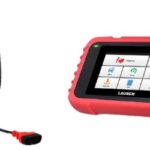Cda Radar, often associated with discussions about online content moderation and legal liabilities, refers to the interplay between the Communications Decency Act (CDA) and radar technology, particularly in the context of user-generated content. This article explores the CDA, specifically Section 230, and its implications for platforms utilizing radar data, alongside outlining DMCA procedures for handling copyright infringement.
The Communications Decency Act and Section 230
The Communications Decency Act of 1996, a landmark piece of legislation, aimed to regulate online content. Crucially, Section 230 provides immunity from liability for website platforms and internet service providers (ISPs) regarding content posted by third-party users. This section states that “No provider or user of an interactive computer service shall be treated as the publisher or speaker of any information provided by another information content provider” (47 U.S.C. § 230). In essence, platforms hosting radar-related data, discussions, or imagery generated by users are generally not held responsible for the legality or accuracy of that content. This protection allows for open online discourse and innovation without fear of constant litigation for user submissions. However, this immunity is not absolute and has exceptions, such as for federal criminal law or intellectual property violations.
DMCA Policy for Radar Data Platforms
The Digital Millennium Copyright Act (DMCA) addresses copyright infringement in the digital realm. Platforms hosting user-generated content involving radar data, such as images, analyses, or software, must comply with the DMCA. This includes establishing a process for receiving and addressing copyright infringement notices. Generally, this involves:
- Designated Copyright Agent: Platforms should designate an agent to receive DMCA notices. This individual or entity is responsible for handling claims of infringement.
- Notice and Takedown Process: Upon receiving a valid DMCA notice, the platform must act expeditiously to remove or disable access to the infringing material.
- Counter-Notice: The alleged infringer has the right to submit a counter-notice disputing the claim.
- Restoration of Content: If a valid counter-notice is received, the platform may restore the content after a specific period, unless the original claimant initiates legal action.
Filing a DMCA Notice for Radar Content Infringement
To file a valid DMCA notice for alleged copyright infringement related to radar content, the following information must be provided to the platform’s Designated Copyright Agent:
- Identification of the copyrighted work: Clearly identify the specific copyrighted work alleged to be infringed.
- Identification of the infringing material: Provide the URL or precise location of the infringing material on the platform.
- Contact Information: Include your name, affiliation, address, phone number, and email address.
- Good Faith Belief Statement: Declare your good faith belief that the use of the material is unauthorized.
- Accuracy and Authority Statement: Declare, under penalty of perjury, that you are the copyright owner or authorized to act on their behalf.
- Signature: Provide your full legal name and electronic or physical signature.
Conclusion
CDA radar highlights the intersection of online content moderation, user-generated content related to radar technologies, and legal frameworks like the CDA and DMCA. Section 230 of the CDA provides crucial protection for platforms hosting user-generated radar content, while the DMCA outlines procedures for addressing copyright infringement. Understanding these legal frameworks is essential for platforms and users operating in the realm of radar data sharing and analysis. By adhering to DMCA guidelines and understanding the scope of Section 230, platforms can foster a vibrant community while mitigating legal risks.

